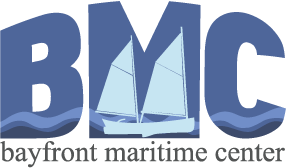The Research Vessel Nancy K, a 55’ Great Lakes fishing tug built in 1951, will be moored here in Erie with the Bayfront Maritime Center vessels in the East Canal Basin for several days. Aboard are University of Michigan Research Scientists studying plastic pollution levels in Great Lakes waters. Most of these plastic particles are tiny and can only be seen through a microscope. What they’re looking for is a nearly invisible cloud of plastic particles near the surface. Fish can confuse it with food, or swallow it by accident.
These plastic particles attract chemical pollutants and can carry toxins like PCB’s and dioxin. Plastics in the Great Lakes come from bags, bottles, cigarette butts, exfoliating face wash and shampoos with tiny plastic beads in it. The small plastic particles also create a metropolis for tiny marine bacteria.
Plastic pollution in the Great Lakes is an emerging area of research, taking a cross-disciplinary and multiscale approach to define the ecological and environmental health risks of plastics in the Great Lakes. This includes improving circulation models to better predict transport, contribute to remediation plans, and disseminating knowledge through curriculum, quantifying and qualifying the degree of plastic-bound organic pollutants and exploring the plastic-dwelling microbial community.
Call Us Today! (814) 456-4077 | info@bayfrontcenter.org


Leave A Comment